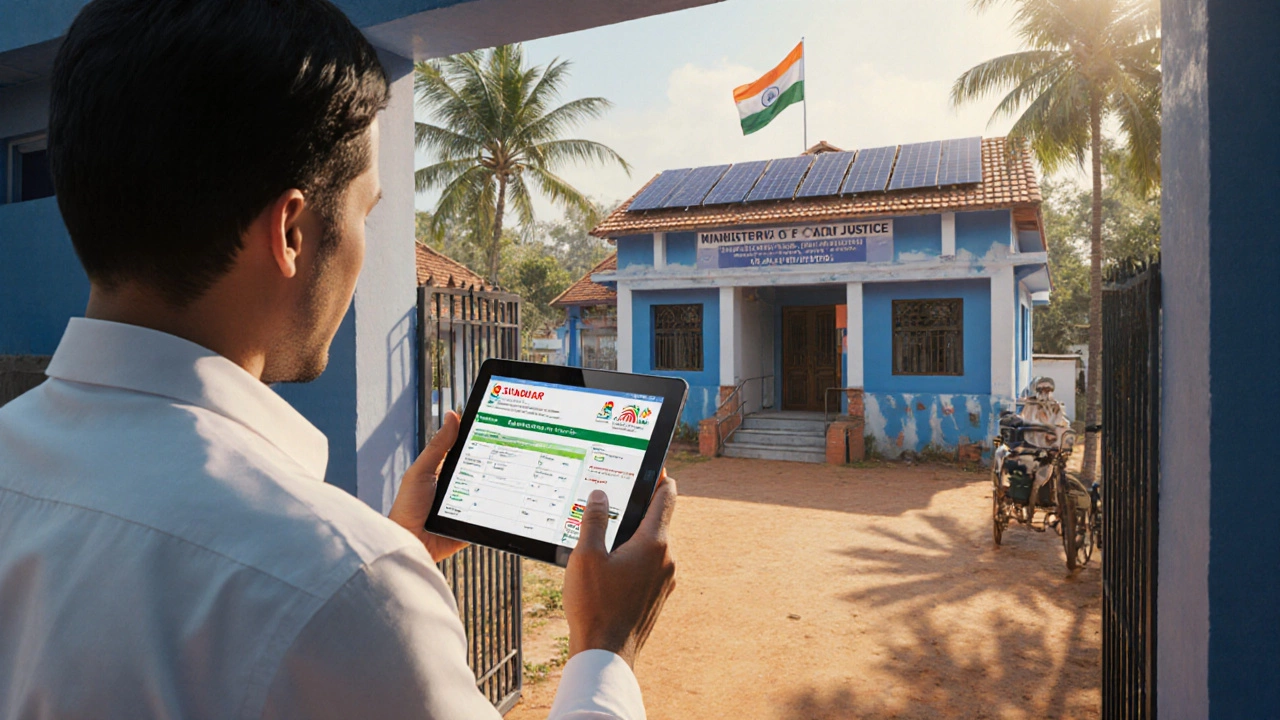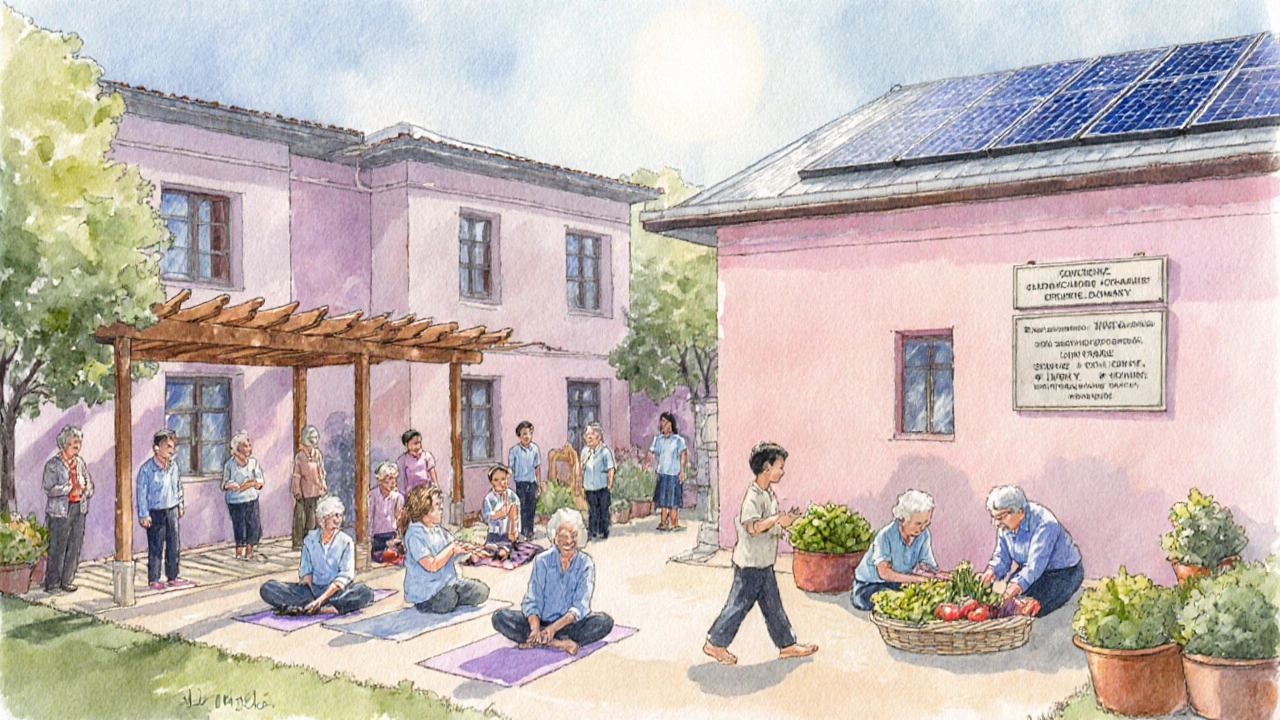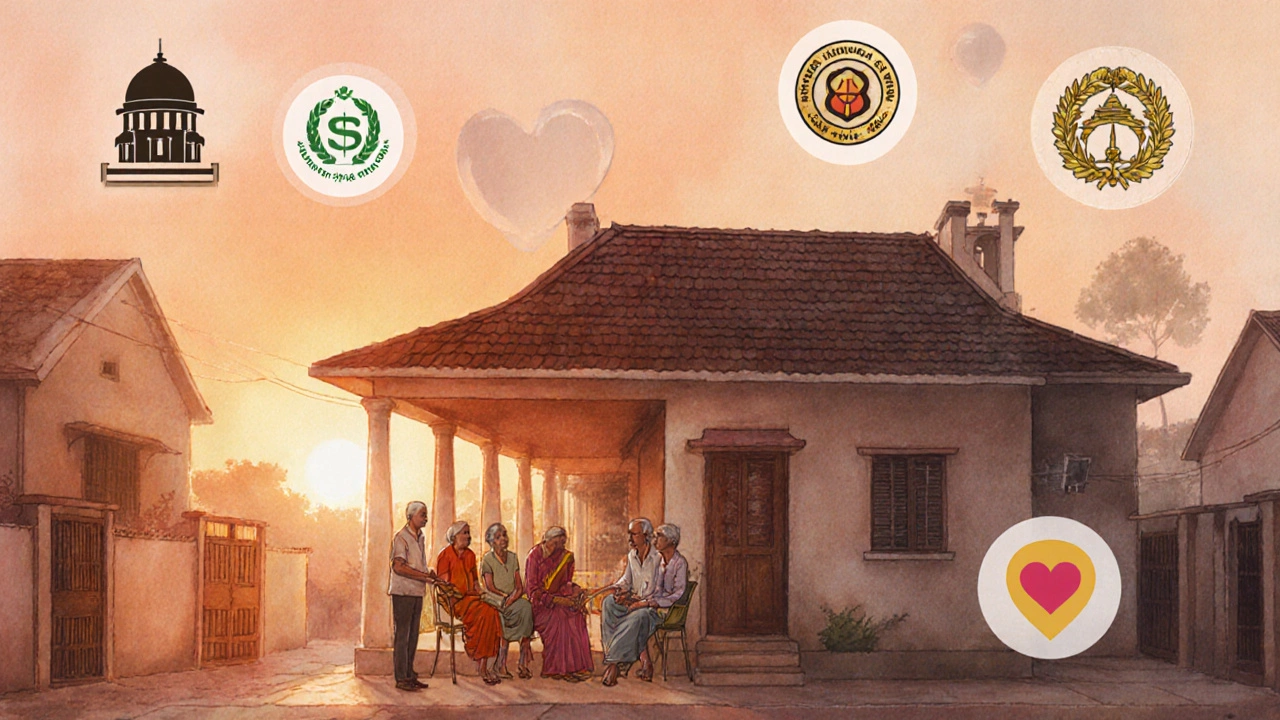Old Age Home Funding Eligibility Calculator
Discover which funding sources you're eligible for based on your home's registration status and funding needs. This tool will help you prioritize applications and focus your efforts on the most suitable opportunities.
Assess Your Eligibility
Eligibility Score
Based on your responses, you've scored % eligibility for potential funding sources.
Eligible Funding Sources
Ineligible Sources
Next Steps
Follow these steps to strengthen your funding applications:
Required for government schemes:
- Registration under Societies Registration Act or as a Trust
- Compliance with Minimum Standards for Old Age Homes
- Needs assessment report from district social welfare office
- Financial audit documentation
Required for CSR funding:
- Non-profit status registration
- Clear project proposal aligned with CSR goals
- MoU with company's CSR department
Required for crowdfunding:
- Compelling story with resident videos/photos
- Realistic budget breakdown
- Platform-specific requirements
Finding money to keep an old age home running in India can feel like hunting for a needle in a haystack. The good news? Funding comes from many directions - central ministries, state welfare departments, corporate CSR wallets, charitable trusts, individual donors and even online crowds. This guide breaks down each source, shows who’s eligible, and offers a quick‑checklist so you can match the right money to your project.
Key Takeaways
- Central and state Government schemes cover capital costs, monthly subsidies and staff salaries for registered homes.
- Corporate CSR funds are earmarked for infrastructure, skill training and community‑outreach programs.
- NGOs, trusts and philanthropists often fill gaps left by public money, especially for niche services like dementia care.
- Crowdfunding platforms provide a fast, transparent way to raise small‑scale donations for specific needs.
- Compliance, reporting and audit trails are essential for every funding stream to avoid penalties.
1. The Government Funding Landscape
India’s government invests heavily in senior‑citizen welfare through three main channels:
- Central schemes administered by the Ministry of Social Justice and Empowerment. The flagship program, Integrated Programme for Older Persons (IPOP), allocates up to ₹5crore per state for constructing or upgrading old age homes.
- State Welfare Departments that run the Senior Citizens Welfare Fund (SCWF). Allocation varies by state - Kerala, Tamil Nadu and Maharashtra top the list, offering annual grants of ₹10‑20lakhs for operational costs.
- Special purpose grants like the National Action Plan for Ageing, which provides one‑time capital assistance for homes that adopt modern medical equipment.
Eligibility generally requires:
- Registration under the Societies Registration Act or as a Trust.
- Compliance with the Minimum Standards for Old Age Homes (room size, sanitation, staff‑to‑resident ratio).
- Proof of need - a needs‑assessment report from the district social welfare office.
Applications are submitted online through the SWADHAR portal, followed by a site inspection and financial audit.
2. Corporate Social Responsibility (CSR) Money
Since the Companies Act2013, firms with a net worth of ₹500crore or more must allocate at least 2% of their average net profit to CSR. Elder‑care projects are a popular CSR focus because they align with the “social welfare” clause.
Typical CSR contributions include:
- Building new wings or renovating existing structures.
- Funding medical equipment, physiotherapy units, and solar power installations.
- Running skill‑development workshops for staff and residents.
To tap CSR funds, follow these steps:
- Identify companies with a declared focus on health, senior welfare or community development. Use the CSR‑India portal to filter by sector and project size.
- Prepare a concise proposal (max5pages) covering: mission, impact metrics, budget, and how the company’s CSR goals are met.
- Submit the proposal to the company’s CSR department or via the CSR‑India online portal.
- After a positive review, sign a Memorandum of Understanding (MoU) that outlines reporting frequency (quarterly) and audit requirements.
Remember, CSR money is often one‑off; you’ll need to combine it with recurring subsidies for sustainability.

3. NGOs, Charitable Trusts & Philanthropists
Non‑governmental actors fill critical gaps, especially for specialized care (e.g., Alzheimer’s, palliative care). Major NGOs such as HelpAge India and Agewell Foundation run grant cycles twice a year.
Key funding models:
- Programmatic grants - usually ₹5‑15lakhs for a specific activity (e.g., nutrition program).
- Operating subsidies - monthly stipends to cover staff salaries.
- Endowment funds - large donors set up a trust that generates interest income for the home.
How to approach them:
- Research NGOs that list “elder‑care” or “senior housing” among their focus areas.
- Draft a needs‑assessment report and a monitoring‑and‑evaluation (M&E) framework.
- Invite the NGO’s program officer for a site visit - transparency builds trust.
- Negotiate a grant agreement that specifies disbursement schedule and impact reporting.
Individual philanthropists often act through family trusts. A personal meeting, a clear impact story, and a tax‑benefit briefing (Section80G deduction) go a long way.
4. Community Donations & Religious Institutions
In many towns, local temples, mosques, churches, and community clubs run fundraising drives during festivals. Contributions are usually cash, in‑kind supplies (food, bedding) or volunteer labor.
To mobilise community money:
- Organise a “Senior Care Day” during a major festival; showcase resident stories.
- Set up a transparent ledger - a simple spreadsheet displayed on a notice board builds confidence.
- Offer recognition plaques or naming rights for major donors.
While amounts are modest (₹10thousand‑₹2lakhs per event), the goodwill generated often leads to volunteer support and occasional larger one‑time gifts.
5. Crowdfunding & Innovative Financing
Online platforms such as Ketto, Milaap and ImpactGuru let you raise funds for specific projects - for example, “Install a solar rooftop for our old age home”.
Success factors:
- Storytelling - use resident videos, before‑after photos, and a clear budget breakdown.
- Target amount - keep it realistic (₹2‑5lakhs) to reach the funding goal quickly.
- Reward tiers - offer thank‑you cards, name‑plates, or a virtual tour for donors.
- Social sharing - ask supporters to repost on WhatsApp, Facebook, and Instagram.
Platforms charge 5‑7% of the total raised; factor that into your budget.

6. Funding Source Comparison
| Source | Typical Grant Size | One‑off vs Recurring | Eligibility Complexity | Reporting Burden |
|---|---|---|---|---|
| Central Government Schemes | ₹5crore (capital) / ₹10‑20lakhs (annual) | Both | High - requires statutory registration & audits | Quarterly + annual audit |
| State Welfare Funds | ₹10‑20lakhs per year | Recurring | Medium - state‑specific forms | Bi‑annual reports |
| CSR Contributions | ₹5‑50lakhs (project‑based) | One‑off | Medium - proposal & MoU | Quarterly impact report |
| NGO / Trust Grants | ₹5‑15lakhs (program) | One‑off or short‑term | Low‑Medium - M&E plan needed | Project‑end report |
| Community / Religious | ₹10thousand‑₹2lakhs (event) | One‑off | Low - informal | Basic ledger |
| Crowdfunding Platforms | ₹2‑5lakhs (campaign) | One‑off | Low - online form | Platform‑provided summary |
7. Quick Checklist for Securing Funds
- Ensure legal registration (Society, Trust, or Section8 Company).
- Prepare the Minimum Standards compliance certificate - a must for all government schemes.
- Draft a 5‑page impact proposal with clear KPIs (e.g., number of residents served, health outcomes).
- Identify at least two funding sources before starting applications - diversification reduces risk.
- Set up a transparent accounting system (software like Tally or Zoho Books) to satisfy audit requirements.
- Maintain a donor‑communication calendar - thank‑you notes, quarterly newsletters, annual impact videos.
8. Frequently Asked Questions
What is the main government scheme for old age homes?
The flagship scheme is the Integrated Programme for Older Persons (IPOP) under the Ministry of Social Justice and Empowerment, which offers up to ₹5crore per state for construction and ₹10‑20lakhs annually for operations.
Can a privately run old age home receive CSR funds?
Yes. As long as the home is registered as a non‑profit entity and can demonstrate how the CSR project aligns with the company's social goals, companies can fund infrastructure upgrades, medical equipment, or skill‑training programs.
How often must I file audit reports for government grants?
Government grants typically require quarterly financial statements and a comprehensive annual audit certified by a chartered accountant. State‑level funds may ask for bi‑annual reports.
Is there a limit on how much CSR money I can receive?
Each company can allocate up to 2% of its average net profit to CSR, but there is no statutory cap on how much a single project can get, provided the proposal meets the company’s CSR policy and the overall allocation limit.
Do crowdfunding donations count as tax‑deductible?
Only if the old age home is registered under Section80G or a recognized charitable trust. Otherwise, donors can claim “gift” deductions under personal income tax rules, but the amount is limited.
With the right mix of public, private and community money, an old age home can move from surviving to thriving. Start by checking your eligibility for the central and state schemes, then layer CSR, NGO and crowd‑sourced funds on top. Keep records clean, report regularly, and you’ll build a funding pipeline that lasts for years.

